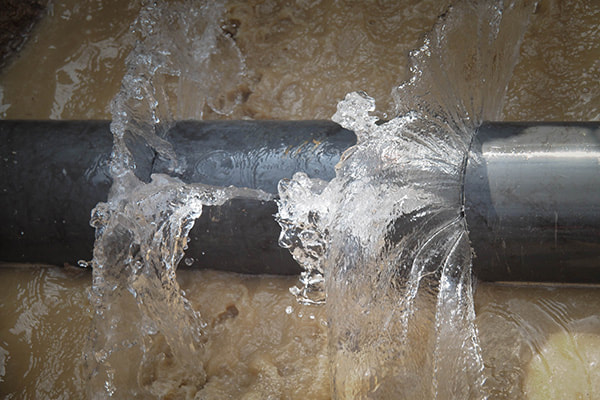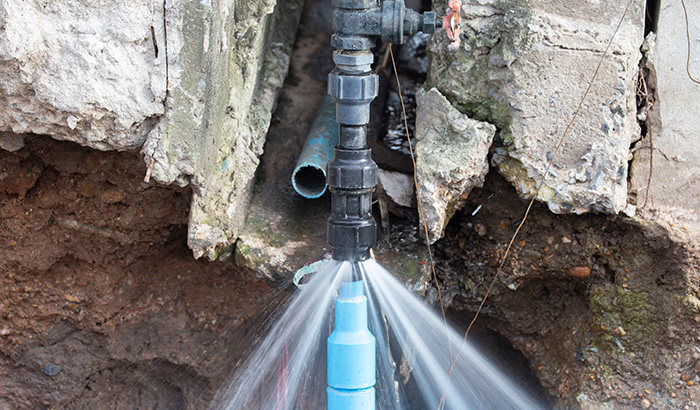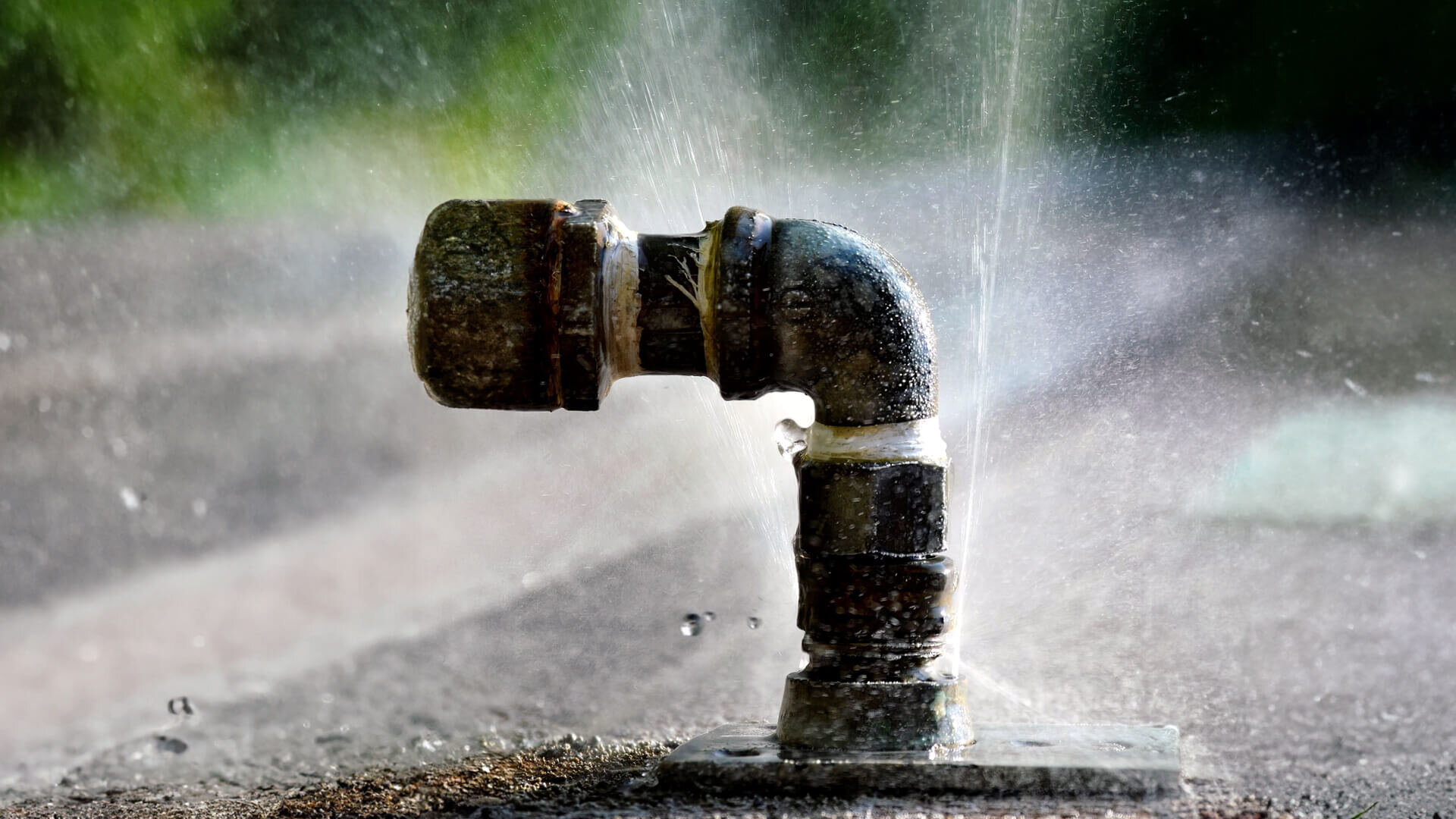What to Do When a Pipeline Bursts: Immediate Tips for Home Owners
A pipe burst can be a property owner's worst headache, leading to substantial damages otherwise resolved promptly. The immediate feedback is critical: first, locate the source of the leak and shut down the main water valve to avoid additional flooding. Following this, draining the pipes becomes vital to alleviate extra problems. Nevertheless, numerous property owners neglect the significance of documenting the damage for insurance cases, and the procedure doesn't end there. Comprehending the extensive steps to take can have an extensive influence on healing and remediation efforts. What adheres to following is necessary for reliable resolution.

Examine the Scenario
When a pipe bursts, the very first action is to assess the situation promptly. This initial assessment is vital in determining the extent of the damage and the prospective threats entailed - burst pipe. Begin by identifying the source of the leak; this may include evaluating the area around the burst pipe for visible indications of water getaway. If the ruptured happened in a hidden room, such as within a wall surface or under a flooring, seek water spots or pooling that may suggest the place.
Next, evaluate the surrounding environment for hazards. Check for electric cords that might be subjected to water, as this presents a considerable danger of electrocution. Furthermore, make note of any kind of beneficial things or furniture that might be at risk of water damage. Recognizing the range of the circumstance will help you prioritize your following actions effectively.
Documenting the damage via photos can also be beneficial, specifically for insurance coverage claims. Time is essential, as standing water can cause mold and mildew growth and more structural damage. By extensively evaluating the situation, you will certainly be much better prepared to take the needed steps to reduce further issues developing from the ruptured pipe.
Shut Off the Water
The immediate priority after recognizing a burst pipeline is to turn off the water supply to avoid further flooding and damages. Find the major shut-off valve, typically found near the water meter, in the cellar, or on an exterior wall surface. Turning this shutoff clockwise will quit the flow of water throughout your home, minimizing the risk of considerable water damage.
If you are incapable to discover the main shut-off shutoff or if it is malfunctioning, you may require to turn off specific valves attached to the affected pipe, if obtainable. Some homes also have additional shutoffs for particular devices, such as cleaning dishwashers or devices.
It's a good idea to familiarize on your own with the place of these shutoffs prior to an emergency occurs, as this understanding can conserve valuable time during a dilemma. In the occasion that the major valve is stuck or hard to turn, do not compel it; instead, consider seeking expert aid.
Once the supply of water is turned off, take a minute to analyze the scenario further while getting ready for the next actions, making sure that your home is as safe and secure as feasible from additional water intrusion.
Drain the Pipes
After turning off the supply of water, it is essential to drain the pipes to lessen any type of staying water that can cause added damages. Begin by opening up all taps in the home, beginning with the greatest level to the least expensive. This procedure motivates the water to spurt totally, enabling gravity to help in eliminating residual water from the pipes.

Be mindful when draining pipes warm water, as it can cause burns. Enable the water to leave until the flow stops. Utilize towels or a damp vacuum cleaner to soak it up if you discover any type of continuing to be water pooling. Correctly draining pipes the pipelines is crucial to avoiding additional difficulties and helps protect your home from added water damages throughout this stressful situation.
Get In Touch With an Expert
In the wake of a burst pipe, calling an expert plumbing technician is critical to make certain a thorough assessment and effective repair work. Attempting to handle the situation without expert assistance can lead to more damages and difficulties. An accredited plumbing technician has the competence and specialized tools required to determine the root cause of the leakage and address it successfully.
When choosing a plumbing technician, prioritize those with a strong online reputation and pertinent experience in emergency situation plumbing solutions. Examining on the internet reviews, getting references, and validating credentials can help you make an enlightened option. It is recommended to contact numerous experts to compare feedback times, approximated recommended you read costs, and solution offerings.
When you have involved a plumbing technician, offer them with as much information as feasible about the case, including the area of the ruptured pipe and the actions you have currently taken. This information will certainly assist them in detecting the problem swiftly and properly.
File the Damages
When a plumber has actually been contacted and the instant concerns resolved, it is necessary to record the damage brought on by the burst pipe. This action is essential for both insurance claims and potential repair work. Begin by taking clear photographs of the influenced locations, focusing on noticeable damages to walls, flooring, and home furnishings. Guarantee that photos capture various angles and ranges to offer a thorough view of the circumstance.
Next, put together a thorough listing of harmed things, including their approximate worth and any appropriate acquisition details. This supply should encompass permanent fixtures, individual valuables, and any kind of architectural damages observed. When possible, include the estimated expense of repair services based upon specialist analyses or previous quotes for comparable job.
Along with written and visual paperwork, keep records of any type of communications with your plumbing and insurance coverage provider. This information will sustain your case and promote a smoother procedure for description repairs. Be meticulous in your documentation efforts, as thorough documents can dramatically influence your capacity to get compensation and accelerate repair initiatives. By taking these steps, you will be better prepared to navigate the after-effects of the case - burst pipe.

Conclusion
Immediate evaluation of the scenario, adhered to by closing off the major water supply, is critical. Draining pipes the pipelines and recording the More Help damages makes certain proper handling of the incident for insurance purposes.
The immediate priority after identifying a ruptured pipeline is to close off the water supply to protect against more flooding and damages. Turning this valve clockwise will quit the circulation of water throughout your home, minimizing the threat of considerable water damages.
After shutting off the water supply, it is essential to drain the pipes to minimize any remaining water that can lead to additional damages. For homes with a hot water heating unit, you ought to additionally drain the storage tank by linking a pipe to the drain valve and directing the water into an ideal container or exterior.
Correctly draining the pipes is critical to avoiding more difficulties and helps safeguard your home from additional water damage during this difficult scenario.